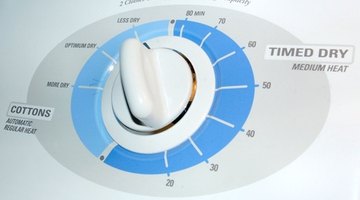How to Wire in a 30 Amp 220 Outlet
Wiring a 30-ampere, 220-volt receptacle is a straightforward project, assuming that the 3-conductor w/gr. cable and device box is already in place. The 1999 Revision of the National Electrical Code (NEC) requires all newly installed 30-ampere, 220-volt receptacles to be of the 3-pole, 4-wire type. A 3-wire, 3-pole receptacle can no longer be installed because the system neutral wire is no longer permitted to double as the equipment-grounding conductor.

-
Turn the branch circuit breaker off and secure it in the off position before beginning this project.
-
Remove 3/4 inches of insulation from the ends of the wires.
-
Insert the red and the black wires under the "X" and "Y" compression screws and tighten the screws securely down on them.
-
Insert the white, neutral wire under the "Z" compression screw and tighten the screw securely down on it.
-
Insert the green insulated or bare copper grounding wire under the "Grn" compression screw and tighten the screw securely down on it.
-
Tug on all the wires to make sure they are secured tightly under their compression screws. Loose connections allow arcing faults to develop which can cause the insulation and any surrounding combustible material to catch fire. Loose connections, besides being a fire hazard, cause a high resistant connection to develop and that in turn causes a voltage drop to develop at the connection, robbing your appliance of needed voltage.
-
Push the receptacle into the box being careful to not pinch any of the wires between the receptacle and the metal box. Installing a 30-ampere, 220-volt, 3-pole, 4-wire receptacle in a standard device box is a tight fit so it's easy to pinch and damage the insulation on the wires if care isn't used.
-
Secure the receptacle in the box with the 6-32 screws that came with the receptacle. Make sure that the receptacle is straight and centered properly in the box before tightening the screws completely.
-
Install the receptacle cover plate. Turn on the branch circuit breaker.
References
- "National Electrical Code": National Fire Protection Association; 2008 Revision
- No Jolt: Understanding 220 or 240 volt Electrical Circuits
- wireityourself: 220 volt home appliances
Tips
- If the reason you are thinking about installing a new clothes dryer receptacle is because you've bought a new dryer and it's four pronged plug won't fit into your old three slot receptacle, you might want to consider replacing the dryer cord with the old style cord with the three prong plug. The NEC permits this as long as you "Bond" the metal frame of the dryer to the neutral terminal with a piece of copper wire. Changing the dryer whip (power cord) is often quicker and easier than changing the receptacle; especially if the original cable installed doesn't have the needed fourth wire, the equipment grounding wire. Without an installed grounding wire you would need to run new cable all the way back to the circuit breaker panel to install a 3-pole, 4-wire receptacle and that will be far more expensive and labor intensive than changing out the dryer's power cord.
Writer Bio
Based in Colorado Springs, Colo., Jerry Walch has been writing articles for the DIY market since 1974. His work has appeared in “Family Handyman” magazine, “Popular Science,” "Popular Mechanics," “Handy” and other publications. Walch spent 40 years working in the electrical trades and holds an Associate of Applied Science in applied electrical engineering technology from Alvin Junior College.
Photo Credits
- laundry dial image by Sirena Designs from Fotolia.com
More Articles



